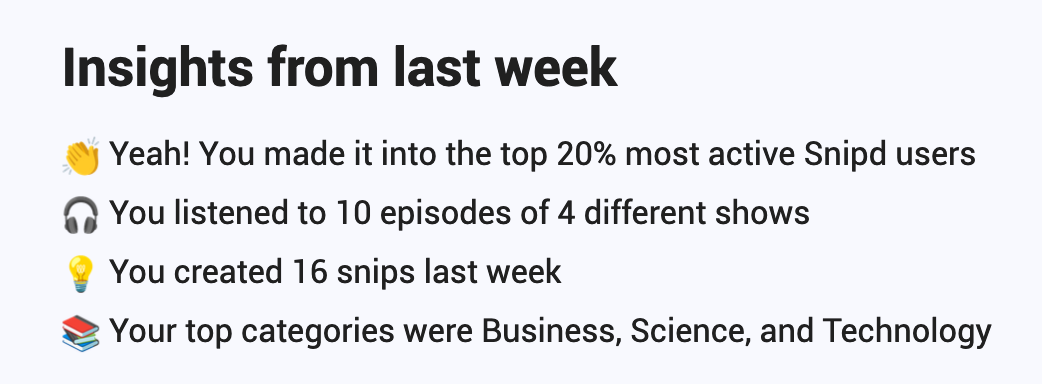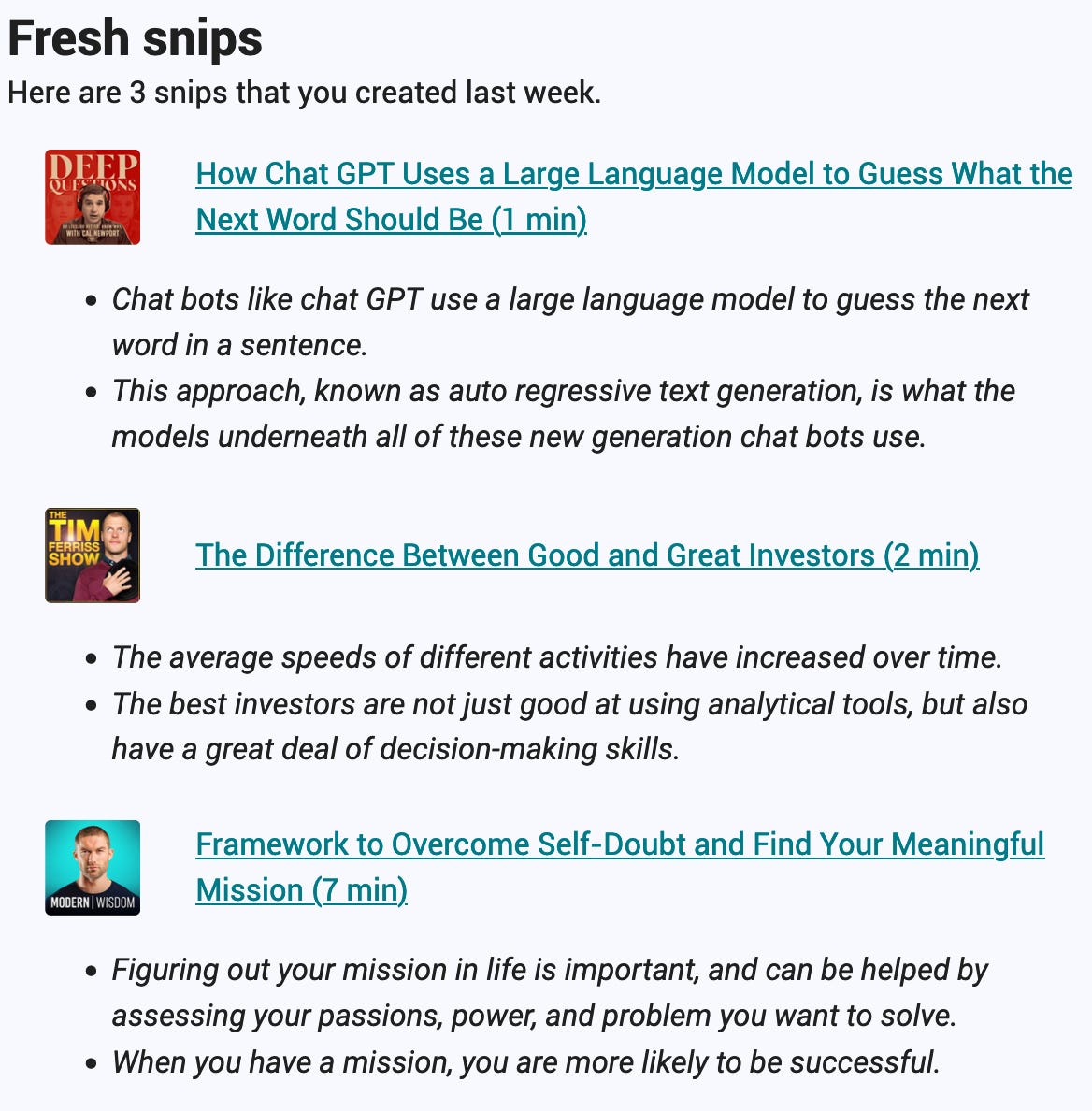Life is like a lazy river at a casino resort, full of drunk people, they say, because it always goes forward.
Our perception of life-speed depends on where we are in the river. Doomscrolling or entering the bad side of the internet means you’re in turbulence. And people are peeing in it.
Lately, I have been in the rapids, swept up in information currents. It has been fun. I’ve come across a lot of AI news, reading Ray Dalio, listening to podcasts etc. but I am near my limit and I need to bilge water out of my boat.
I think processing what I’ve learned will help me pick better rapids and stabilize the boat.
Goal: This is an attempt to write a regular recap. I will go over some of my recent interests, podcasts and info I’ve come across. I will attach some actionable items where I can.
Interests lately
1. Systems
If you want to skip a section, this is the one. It’s a work in progress.
I have been seeking to solidify my systems regarding problem solving and processing information. I have found that while gaining new information is fun, I need to translate it to effective action. PROBLEM: A. there is too much information. B. When do I switch from learning to doing? C. My learning drive can be high intensity, yet lack direction. SOLUTION: In order to direct this firing, I must follow a very basic unscientific framework: A. Orient with information and then B. Implement systems. Here is an example:
Orient: Gather information from news, podcasts → Organize and streamline collection using apps like Snipd → Implement: Synthesize information in Substack. I implement this process when there is no other pre-established protocol.
A. Orientation. I have been paying special attention to the orientation process lately. This step involves gathering data and gaining context. I have increased the frequency with which I catalogue observations. I have seen so many repeating patterns in different domains that I feel I am being inefficient if I don’t compare them. GARBAGE IN GARBAGE OUT (GIGO) say it with me. If I learn trash, I speak trash, simple as. Good orientation prevents GIGO.
Example 1: Self-assessment context. I deliver regular (Google calendar) “State of the Union”s to myself . This is a sober assessment of multiple life aspects, summarized in a document which I revisit periodically. This has led to a clear list of skills I which would like to improve on, or problems to solve, like reducing digital clutter, or optimizing my daily energy. I have used this to manage my psoriasis without medication and many other issues. Each issue has its own system or a direct action I can take to solve it. If I don’t have the time or an answer, then it’s on my to-do list.
Example 2: Laboratory experiments. This week, I troubleshot my laboratory experiments in detail. I listed everything I was looking at in real time (not retroactive). While I have done this for ~10 years, about a year ago I began reflecting on specific methods of dispassionate observation which I came across in Louis Menand’s The Metaphysical Club (fantastic read. 4/5 stars because I and 63% of Goodreads literally can’t understand enough of what he writes to give him that last star. Us problem). Next, I used these and began the implementation step, where I wrote a list of actionable items based on these observations.
B. Implementation. I have found that consciously using systems has helped me convert what I have learned from orientation into action. I define a system as a series of conscious actions, which I perform toward a goal (distinct from habits or reactive action). The system has an input, and outputs either a goal completion or reassesses the priors/assumptions of the system. The example I recently adopted was beginning this Substack. My systems are flexible regarding scheduling but must be done regularly or have other conditionals. This looks a lot like the explore/exploit readeoff, which is the tension of switching between learning and doing summarized by Algorithms to Live By.
Believe it or not, this saves a lot of time in the long run. Whether or not you should invest time in Orient/Implement should be proportional to the stakes of failure (cost/gain) multiplied by the liklihood of failure/success. Yes, maybe the orient/implement can be considered its own meta-system but let’s not go recursive, I can explore this another time.
Action items: Speed up info gathering and organization by next recap. Implement an automated system of voice → text. I have a good system which I will share soon.
2. Substack
Beginning this Substack has created a system which has incentivized turning my learning into writing. Now, when I learn something I engage a ‘simplifying’ program in my brain. Knowing that I may share at least part of what I come across makes me re-structure it. This helps keep me focused, adds a new use-case for the interesting things I used to come across (and forget) over the years, and is enjoyable.
I have seen my friends do this with lifting and cooking social media accounts or money management. I tried this with indoor plants during the pandemic to learn how IG and Facebook algorithms worked. I was not intrinsically motivated by this, so it fell of.
I am now also on the hunt for analogous systems, where I take an old ‘quirk’ and place it in a system. Since listening to podcasts is a common activity, I have found a way to add the app Snipd to my Substack system.
3. Snipd
Snipd is one of my all time favourite apps. It lets me listen to podcasts on the fly and highlight insights. They then send me an email with the insights from the preceding week, as well as reminder summaries.
20%? Not good enough. I will do better. Here is the email summary they sent me
Snip 1:
I already covered a lot of what Cal said in a previous post. Take a look here.
Snip 2:
I think the most important snip from this week for me is Tem Ferriss’ take on what makes a good investor. Tim Ferriss interviews investor Michael Mauboussin. He notes that while great investors have good base (you must master the basic analytical tools such as accounting, finance and mathematical modelling to even begin the race), the most differentiating factor is decision-making. He specifically talks about biases in decision making, which is something I have written about before but need to learn more about. Some of the following points come from Michael’s observations and some from the book he is plugging in the podcast.
The best investors have the following qualities:
They resist overconfidence: He states that most people’s ranges of possible outcomes are far too narrow. To avoid this, establish a target based on a base rate (past data) and cast a wide error, the real answer should fall within the error. Experts account for a wide range of possibilities with a wide error range for each outcome.
They resist to confirmation bias: They resist the error of using new information to support pre-existing beliefs when it is not appropriate to do so. As a trained scientist we have been taught that we must look at the whole data set available, whether the conclusions support our hypothesis or not.
They find new value: They come up with a new views which are slightly different, yet they find value. You must find value to add to the market and capitalize. I think that this is by far the most difficult and I will do further investigation on this on the future. Action item: list where I can find value-adds in my life.
They exhibit equanimity: The are calm under pressure. Long term investors will hold an asset they know is immune to long term cycles and will not panic sell if there is short term volatility. They adopt long horizons and are not emotionally tied to volatility. For the average person. I think this is difficult to do without major capital to weather short term volatility but I otherwise agree.
They are curious: The top investors are always learning and hold no belief that they have everything figured it out. Michael implies that the investors he knows are willing to forego their egos. They acknowledge that they must constantly learn. They remain humble in the face of future uncertainty.
Michael Mauboussin then plugs his book, Think Twice, where he lays out four major lapses in making decisions: 1. Misattributing cause-effect relationships 2. accidentally extrapolating micro to macro level behaviour 3. not considering enough possibilities and 4. relying too much on experts.
He expands on 3, sharing his frameworks for expanding the number of alternative possibilities that you consider:
Base rates: For example, consider the growth rate of a company. There are ranges for good and bad and we compare the actual companies. The real companies will have a huge range of outcomes and we must consider this range as the range of ranges.
Pre-mortem: You must look into the future and pretend as if everything went wrong and destroyed your plans. Popularized by a Harvard Business Review article written by Gary Klein. You imagine a future where you failed, and everyone involved must write down everything that went wrong in this theoretical future. If forces you to consider all options.
Red-teaming: If you were to attack yourself, how would you do this? Open your idea up to possibilites of points of failure. If you have a theory, poke a hole in it. Red teaming actions are central to Karl Popper’s “falsifiability”, which is critical for building solid world views.
Counterfactual: We must imagine what didn’t happen after an event, what could have happened. There were many paths that the world could take. When something does happen, we forget to look at the other outcomes, and we do not rank the actual outcome versus all probable outcomes. We then employ hindsight bias, where we think what actually happened had a greater probability of happening than what its real statistical likelihood bares out.
Snip 3:
Finally, there’s a snip from the Modern Wisdom podcast which I hadn’t heard of before. I had never heard of the host, Chris Williamson, nor his guest, Lewis Howes. According to my research the host is a professional podcaster and…club promoter (deep breath *my judgment is momentary and passing, let’s hear him out*) and the guest is a professional handball athlete who wrote a popular book called The Greatness Mindset. Ok, well model-influencers are not my usual sources of wisdom, but I think think what they have to say stands on its own.
In this clip, Lewis Howes described how his hardships in his 20s resulted in shortsightedness. He first needed to focus on survival. After figuring that out, he was able to look at the big picture using a framework, which I describe below. I took one lesson from this, which I modified in the context of what we spoke about above:
Take-away: A . Survive first, B. but do not over-borrow from the future.
I added B. To survive and plan for the future at the same time makes me think you may need the equanimity we spoke about above. To assess risk accurately in short vs long term investing, making sure that you do not borrow too much from your future in the hope of over-surviving the present. The idea that you can be stuck in local maxima if you do not take adequate risk, causing you to lose distal maxima ,is explained well in in Algorithms to Live By. Translation: it is difficult to grow if you must survive, but there may be a way to do both.
Next, he described his framework for making decisions in three Ps. Passion, Power/Powerlessness, Purpose/Problem.
Passion. I mean, this has always been a hard one. But basically, if you are curious about something, lean into it. This will reduce the barrier of mental entry and you will find that the action is rewarding unto itself. For example, I am leaning in to this blog and while I only have 8 subscribers (my mother has 4 fake gmail accounts to bump my numbers), the action of writing is self-fuelled.
Power. These are clearly momentum based guys, but I let him cook. Lean into your strengths. This makes sense, you need to know your lever arms. Actually, this has major support from organizations which bet their reputation on this type of self-improvement method. The flip side of this is the powerlessness you feel - what is your weakness. This, I think, most people ignore - where do your errors in decision-making and lifestyle come from? For some, its not knowing how to say no, gambling, getting caught in bad relationships, too much X, not enough Y, biases etc. He said he made a list of all his doubts and fears, I agree with this activity! Make this list, Know Thyself.
Purpose/problem: Many people enter an industry and solve a specific problem, yet many others do not know which problems need to be solved. Here, he offers good advice: “We are perfectly positioned to help the person we once were.” What questions would I ask myself if I were younger, which questions am I asking myself now - what have I solved and what am I solving? Here again, write it down and be specific. Just do it once and save it. If you lived it, you are an expert in solving that problem. They say at the top of Maslow’s hierarchy there is this idea of being in service. They help their listeners by coaching them through doubt, which Howes thinks is the single biggest roadblock to success. I am hoping to return to volunteering in the future.
Concluding action items :
Improve my orientation process. Adopt new apps or systems which help with this, implement and summarize them by the next recap.
Adress some version of the 3Ps in my self-evaluation list. Am I able to address where I am effective and ineffective in my life with regards to my goals?
Research value and generate a value-add list based on my self-evaluation.
Shorten my sentences and get to the point faster.
For you: list the facts of the case (your life aspects). Find where you could do better and keep this list somewhere visible. make systems or take actions right now to improve that aspect.





Will you be my boyfriend ?
Wow. That was a read! Your brain sores well over mine on the technical side of things but I got a lot out of what you wrote. My strength is songwriting, so I am just trying to do an original song a week for 52 weeks. I’ll be adding number two? tomorrow. I’m going to have to read your whole thing again when my mind is a little bit slowed. Great stuff!